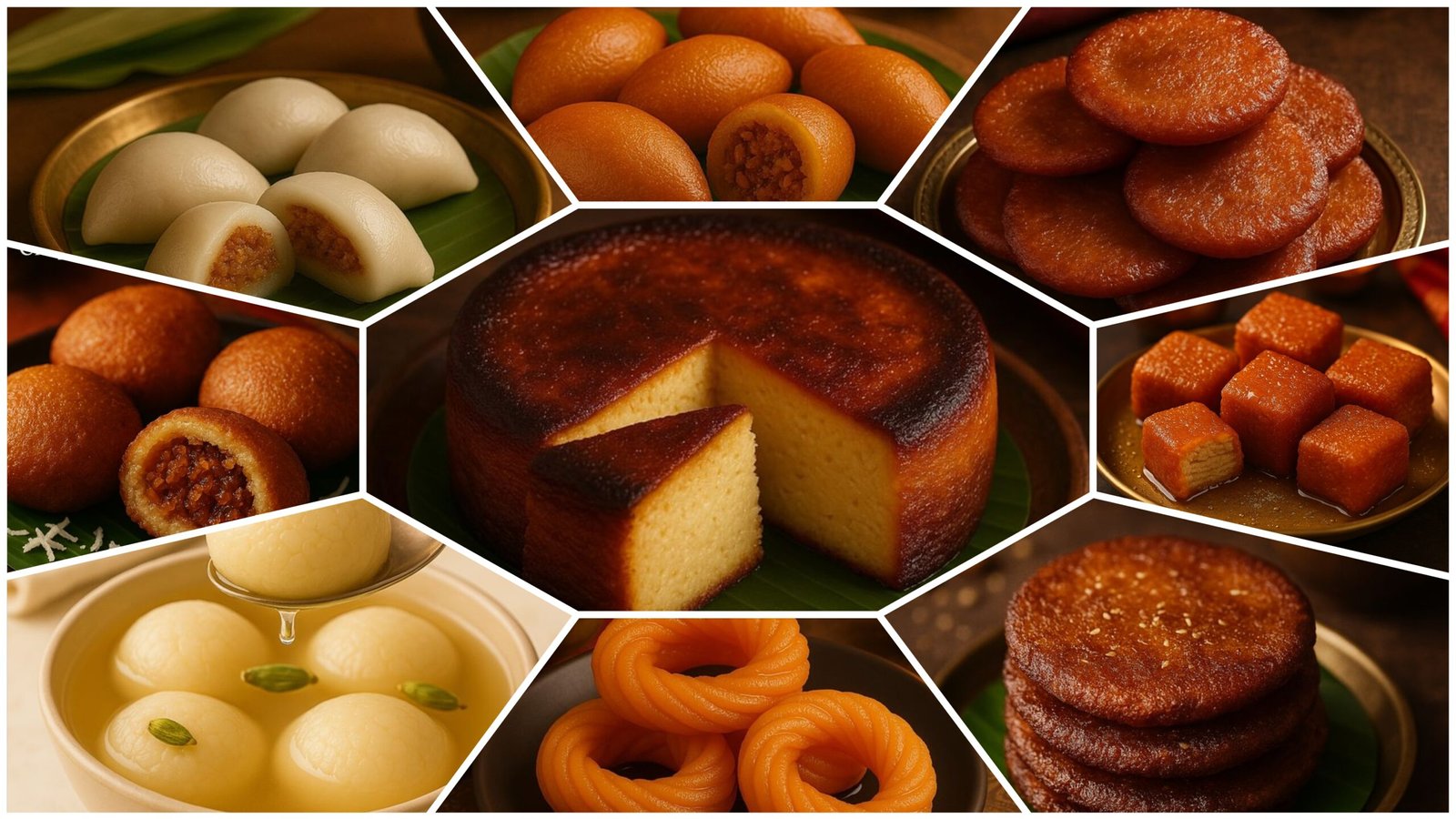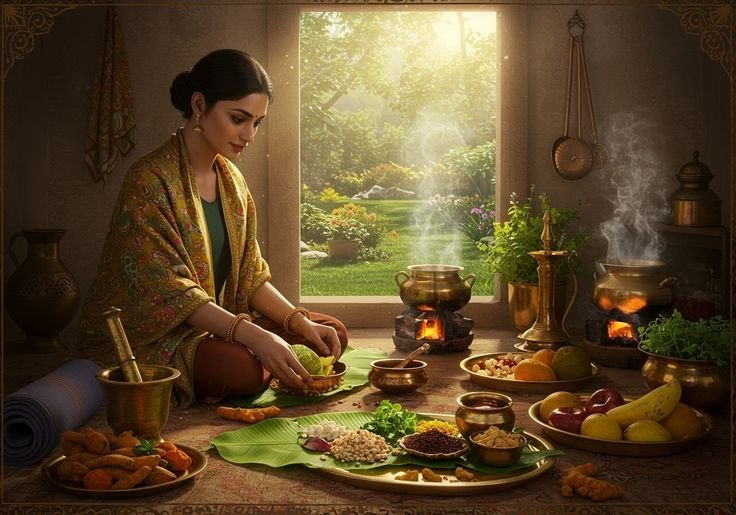
I’ve always believed Bhubaneswar isn’t just a city of temples, it’s a city that celebrates through food. Every festival here tells a story, not just through rituals or lights, but through what simmers in our kitchens and what fills our streets. From the first chill of January mornings to the warmth of December evenings, every month carries its own aroma. A dish tied to a celebration, a recipe passed down by grandmothers, and memories that somehow taste like home.
In this food calendar, I’m taking you through Bhubaneswar’s festivals month by month, what we celebrate, why we celebrate it, and most importantly, what we eat while doing it. Because here, food isn’t just part of the festival, it is the festival.

ମାଘ (Magha – January to February)
Maha Shivaratri
About: The city stays awake all night with chants, lamps, and devotion for Lord Shiva.
Why We Celebrate: It marks the divine marriage of Shiva and Parvati and represents the union of energy and peace.
Signature Dishes: Chhena Poda, Fruits, and Sweets offered to Lord Shiva
Tip: The Lingaraj Temple area is magical during this time and try the local Chhena Poda made fresh at midnight stalls.
Personally: I love walking through the temple corridors during Shivratri, tasting warm Chhena Poda from the nearby stalls, and feeling the city’s quiet devotion wrap around me like a comforting blanket.

ଫାଲ୍ଗୁନ (Phalguna – February to March)
Dola Purnima & Holi
About: The city bursts with color and laughter as people smear each other with gulaal and offer sweets to friends.
Why We Celebrate: Dola Purnima celebrates the love of Radha and Krishna, while Holi marks the victory of good over evil through the story of Prahlad and Holika.
Signature Dishes: Malpua, Thandai, Khaja
Tip: Homemade Thandai with cardamom and rose is the true taste of spring.
Personally: Throwing colors and sipping Thandai with friends makes me feel like a kid again — it’s pure, joyful chaos that Bhubaneswar does best.
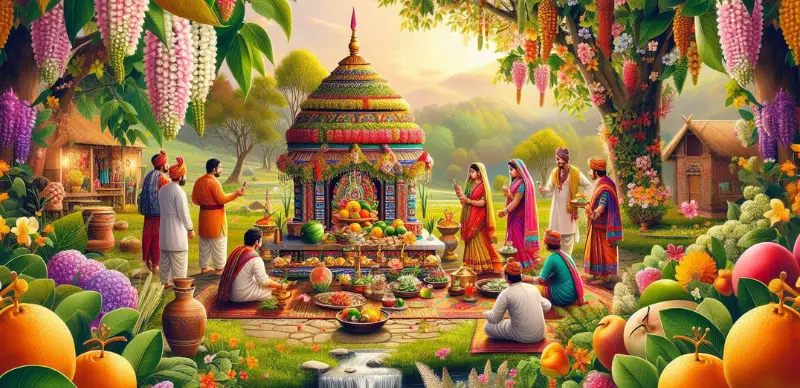
ବୈଶାଖ (Baisakha – April to May)
Maha Vishnu Sankranti / Pana Sankranti
About: The Odia New Year, a time when the scorching summer meets the sweetness of mangoes and jaggery. Homes prepare cooling drinks and offer prayers for prosperity.
Why We Celebrate: It marks the Sun’s movement into the new zodiac cycle and welcomes the harvest. People offer Bela Pana to Lord Jagannath for good health and happiness.
Signature Dishes: Bela Pana, Mango Pana, Chhatu Pana
Tip: Try the traditional Bela Pana from street vendors near Saheed Nagar as they make it just the way it’s meant to be: chilled and refreshing.
Personally: Every year, I make it a point to sip the first glass of Bela Pana at sunrise. That first tangy sweetness instantly makes me feel like the new year has begun in my heart.

ଜ୍ୟେଷ୍ଠ (Jyestha – May to June)
Sabitri Brata
About: Sabitri Brata is observed by married women who pray for the long life of their husbands. They follow a day-long fast and offer prayers at rivers or temple grounds, often wearing traditional sarees and adorning their homes with flowers.
Why it’s celebrated: The festival honors the legendary story of Savitri and Satyavan, where Savitri’s devotion and cleverness saved her husband from death. It’s a celebration of love, loyalty, and strength.
Signature Dishes: Pakhala Bhata, Chuda Ghasa, Manda Pitha
Tip: Visit riverbanks near Bhubaneswar temples on Jyestha Amavasya to see the traditional prayers and offerings — it’s serene and deeply moving.
Personally: I love watching the colorful sarees and hearing the women sing traditional songs while performing the rituals. It feels like the city pauses for devotion.

ଆଷାଢ଼ (Ashadha – June to July)
Raja Parba
About: Bhubaneswar swings into joy. Literally! Swings are hung from trees, songs fill the air, and homes smell of freshly steamed Poda Pitha. For three days, the city comes alive celebrating womanhood, fertility, and the earth’s renewal.
Why We Celebrate: It celebrates womanhood and the fertility of Mother Earth, symbolizing her period of rest before the monsoon sowing season.
Signature Dishes: Poda Pitha, Arisa Pitha, Kakara Pitha
Tip: In Old Town, families still bake Poda Pitha on wooden fires which becomes soft inside, smoky outside, just divine.
Personally: I always make it a point to bite into warm Poda Pitha during Raja — the soft, smoky sweetness instantly transports me back to my childhood courtyard.
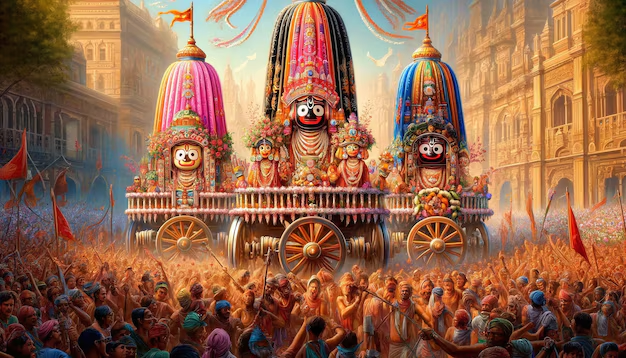
ଶ୍ରାବଣ (Shravana – July to August)
Rath Yatra
About: Streets overflow with devotion as Lord Jagannath, Balabhadra, and Subhadra travel in grand wooden chariots through cheering crowds.
Why We Celebrate: It marks Lord Jagannath’s journey from the main temple to Gundicha Temple, symbolizing accessibility of the divine to everyone.
Signature Dishes: Dalma, Khichdi, Khaja, Mahaprasad
Tip: Have Mahaprasad at Jagannath Temple area as it’s sacred, simple, and incredibly satisfying.
Personally:I still remember the smell of fresh Manda Pitha from my neighbor’s kitchen — it’s a small piece of Bhubaneswar I carry with me every year.

ଭାଦ୍ରବ (Bhadraba – August to September)
Khudurukuni Osha, Ganesh Chaturthi, Ghanta Parba
About: As the rains settle, devotion fills the air. Khudurukuni Sundays, the chants of Ganesh Puja, and the rituals of Ghanta Parba make Bhubaneswar hum with spiritual rhythm.
Why We Celebrate: Khudurukuni Osha honors Goddess Khudurukuni and the story of Tapoi — symbolizing love and prayers for brothers’ wellbeing. Ganesh Chaturthi celebrates Lord Ganesha’s wisdom and beginnings. Ghanta Parba honors Goddess Ghantakarna and is observed by women for their families’ health and prosperity.
Signature Dishes: Modak, Khaja, Ghanta Tarkari, Manda Pitha
Tip: Walk through Old Town on Sunday evenings and you’ll hear Khudurukuni songs and smell freshly fried Pitha.
Personally: I still remember my mother carefully preparing the Ghanta Tarkari and arranging the offerings on our courtyard floor. The smell of spices and fresh vegetables filled our home, and sitting beside her while she chanted the prayers made me feel connected to generations before me — a quiet, beautiful part of Bhubaneswar I’ll never forget.

ଆଶ୍ୱିନ (Ashwina – September to October)
Durga Puja & Dussehra
About: The city comes alive with lights, pandals, and music. Goddess Durga is welcomed into every street, and with her comes feasting.
Why We Celebrate: It marks the victory of Goddess Durga over Mahishasura. The triumph of good over evil. Families gather, eat, and celebrate strength and togetherness.
Signature Dishes: Ghuguni with Chop, Chhena Jhili, Rasogalla
Tip: Saheed Nagar’s street food lanes are a must-visit during Durga Puja evenings.
Personally: I love spending evenings during Durga Puja hopping from one pandal to another, tasting street food, and soaking in the festive music. The energy of Bhubaneswar’s melas, the lights, and the laughter of families wandering through the stalls make me feel like the whole city is celebrating together — it’s pure joy in every step.
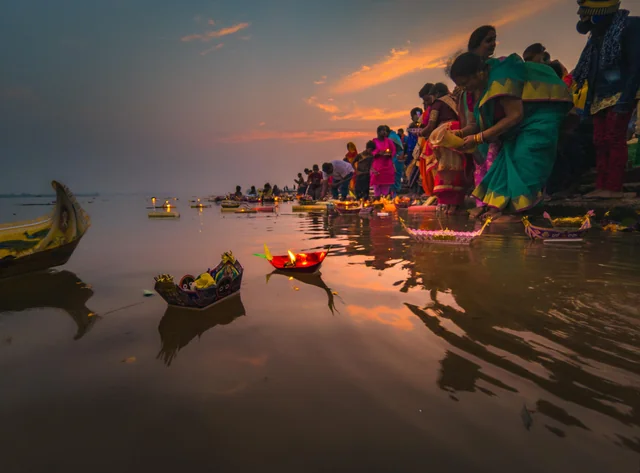
କାର୍ତିକ (Kartika – October to November)
Boita Bandana
About: The holy month of Kartika ends with hundreds of tiny boats floating on lakes and rivers at dawn, a sight straight from legend.
Why We Celebrate: Boita Bandana honors the Sadhabas, ancient Odia sailors who once voyaged to distant lands. It’s about courage, blessings, and remembering our roots.
Signature Dishes: Habisa Dalma, Arisa Pitha, Khai, Muan
Tip: Watch the sunrise at Bindusagar Lake on Boita Bandana, it’s pure serenity and nostalgia.
Personally: Every year, I pause to float my own tiny boat with my family. That quiet moment by the water feels like connecting with generations of sailors and storytellers.

ମାର୍ଗଶିର (Margasira – November to December)
Prathamastami
About: A sweet family ritual celebrating the eldest child in every home. The day feels gentle and full of love.
Why We Celebrate: Prathamastami seeks blessings for the first-born’s health and prosperity and strengthening family bonds.
Signature Dishes: Enduri Pitha (steamed in turmeric leaves), Arisa, Mitha Dahi
Tip: Try Enduri Pitha from local markets and the turmeric aroma is unforgettable.
Personally: I couldn’t help but feel a little jealous every year when everyone hyped my older brother during Prathamastami — praising him, giving him the first taste of Enduri Pitha, and showering him with blessings. As the younger child, I’d quietly watch it all, a mix of envy and fascination, while sneaking bites of the pithas myself!
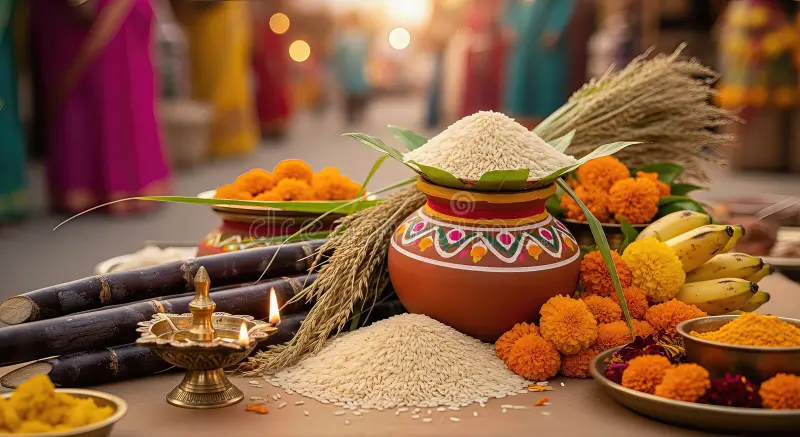
ପୌଷ (Pausha – December to January)
Dhanu Sankranti
About:Dhanu Sankranti marks the Sun’s entry into the Sagittarius (Dhanu) zodiac sign, signaling the beginning of Odisha’s harvest season. It’s a time when markets brim with fresh grains, and families start preparing for winter with rich, sweet dishes. The festival also coincides with the world-famous Dhanu Yatra in Bargarh, where the mythological story of Lord Krishna defeating King Kansa is performed on the streets — turning the entire town into a live stage.
Why it’s celebrated:People observe Dhanu Sankranti to honor the Sun God for bestowing good harvests and to express gratitude for abundance. It symbolizes the shift towards longer, cooler days and the agricultural prosperity that follows.
Signature Dishes: Dhanu Muan, Arisa Pitha, and Chuda Ghasa
Tip: You can spot local stalls near Unit-1 Market and Old Town areas selling Dhanu Muan during mid-December. The crunchy texture and aroma of ghee make it unmissable!
Personally: That first warm bite of Dhanu Muan in December always feels like a gentle hug from the city itself.
And That’s How Bhubaneswar Feeds Its Festivals
Looking back at Bhubaneswar’s year of festivals, I can safely say this city takes its celebrations and its food very seriously. From Raja’s Poda Pitha that melts in your mouth, to the tiny glowing boats of Boita Bandana, to the oh-so-crispy Dhanu Muan in December, there’s always something happening, always something to eat, and usually a little chaos to navigate.
And honestly? Watching everyone hype my older brother during Prathamastami while I, the younger one, quietly plotted how to sneak extra bites of Enduri Pitha that’s the real festival memory I carry.
Bhubaneswar isn’t just temples, history, or Instagram-worthy streets. It’s a city that lives, breathes, and occasionally eats its festivals louder than anyone else. And if you ever visit, just remember: calories don’t count during festival season, but memories do, so eat, float a boat, hop a pandal, and get lost in the chaos. You’ll leave with a full stomach, a happy heart, and maybe just a little envy if your sibling gets the first bite.
While exploring Bhubaneswar’s festival foods, don’t miss experiencing the festivals themselves! Here are a few you should check out: Top Popular Festivals You Must Witness
